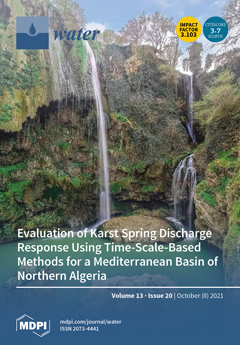In the context of climate change, the intensity, frequency, and duration of drought events have increased significantly, resulting in a profound impact on both natural ecosystems and socio-economic systems. In arid and semi-arid regions, precipitation is the main limiting factor for vegetation growth,
[...] Read more.
In the context of climate change, the intensity, frequency, and duration of drought events have increased significantly, resulting in a profound impact on both natural ecosystems and socio-economic systems. In arid and semi-arid regions, precipitation is the main limiting factor for vegetation growth, and the ecosystems are very sensitive to climate change. Over the past 10 years, the Namibian government has declared national emergencies in 2013, 2016, and 2019 due to extreme drought events. The continued extreme drought has posed serious threat to the country’s food security. Accurately monitoring the continuous drought events in Namibia and assessing their impact on the ecosystem is essential for drought risk management in the region. Based on long-term satellite observation of vegetation index and precipitation, we have evaluated the spatiotemporal dynamics of the three drought events, the vegetation–precipitation relationship across biomes, and the impact of continuous drought events on regional ecosystems. The results suggest that: (1) According to affected area and severity, the drought in 2019 was the most severe one, followed by the drought in 2013; the 2015–2016 drought spread over smaller spatial area, although it continued for two years; (2) Both the accumulated NDVI and precipitation in the growing season in Namibia increased from 2001 to 2010 while showing a significant decreasing trend during 2011–2020; (3) In Namibia, there is a significant correlation between the current season’s accumulated precipitation and the current season’s accumulated NDVI (r = 0.90,
p < 0.01). The current season’s accumulated precipitation is also well correlated with the next season’s accumulated NDVI (r = 0.87,
p < 0.01), and the correlation between the current season’s accumulated precipitation and the next season’s accumulated NDVI in a wet year is even stronger (r = 0.96,
p < 0.01). This indicates that part of the precipitation in the current season may be stored in the soil for the next season’s plant growth, which is more obvious in the northern plains with deep-rooted woody plants; (4) In 2013, the drought event suddenly changed from a long-term relatively humid state to an extremely dry state. During the ecological recovery stage, the NDVI during the growing season could not return to the state before the drought, causing irreversible damage to the Namibian ecosystem. In summary, the continuous extreme drought events during the last decade have caused profound impacts on the regional ecosystem. Much more attention should be paid to whether the extreme drought events will continue into the next decade and how the ecosystem can sustain a new equilibrium under a warmer and drier climate.
Full article





